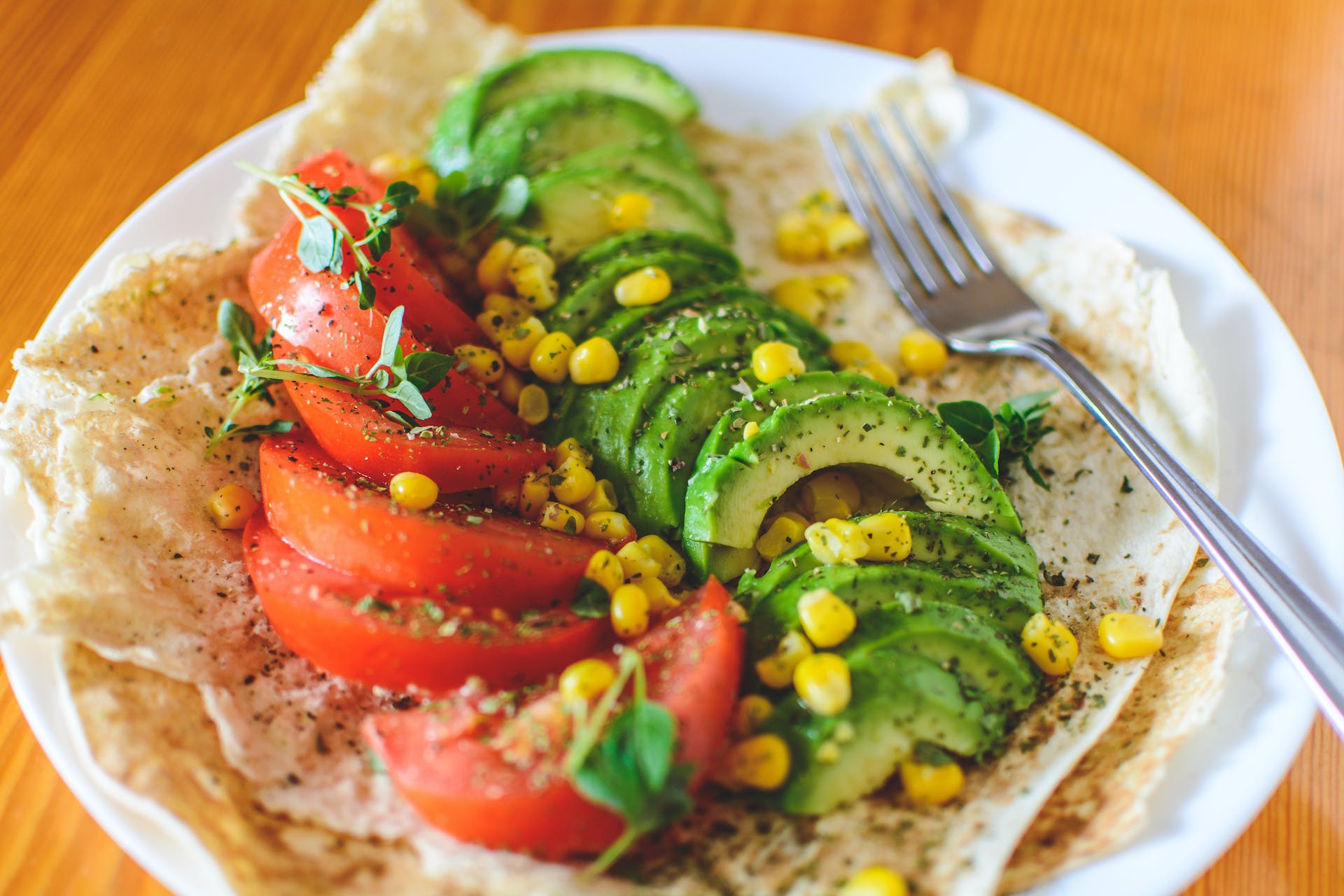Looking to infuse your kitchen with the vibrant flavors of Indian cuisine? Dive into our 12 simple tips for mastering vegan Indian recipes. Stock up on essential spices, embrace lentils and legumes, and elevate your rice and dal dishes. With these authentic and nourishing tips, you’ll be creating flavorful vegan Indian dishes that will delight and nourish your loved ones in no time.
Let’s get cooking!
Key Takeaways
- Essential spices and ingredients such as cumin, coriander, turmeric, garam masala, and mustard seeds are crucial for authentic Indian flavors.
- Lentils and legumes, such as chickpeas and black lentils, are excellent protein alternatives in vegan Indian recipes.
- Experimenting with coconut milk and nut-based substitutions can add new dimensions to vegan Indian dishes.
- Mastering techniques like tofu pressing, dough preparation for roti and naan, and homemade vegan paneer can elevate the quality of vegan Indian cooking.
Stock Up on Essential Spices
You should start by stocking up on at least five essential spices for your vegan Indian recipes. Exploring different cuisines can be a delightful adventure, and finding vegan alternatives to traditional Indian dishes is a rewarding experience.
Begin your journey by acquiring spices such as cumin, coriander, turmeric, garam masala, and mustard seeds. These flavorful additions will infuse your dishes with authentic Indian aromas and tastes, elevating your culinary creations to new heights.
Nourishing your body and soul with these aromatic spices won’t only enrich your meals but also delight those you serve. By incorporating these essential spices, you’ll embark on a journey of flavor, creating vegan Indian dishes that are both authentic and satisfying for those you lovingly prepare them for.
Master the Art of Tofu Pressing
Mastering the art of tofu pressing is essential for infusing your vegan Indian dishes with the authentic flavors and textures that will elevate your culinary creations to new heights.
To begin, invest in a tofu press to remove excess water, allowing the tofu to absorb marinades and spices more effectively.
Once pressed, marinate the tofu in a mixture of traditional Indian spices like turmeric, garam masala, and cumin to impart rich, aromatic flavors.
Additionally, consider using tofu as a substitution for paneer in classic dishes like saag paneer or mattar paneer. The pressed tofu readily absorbs the flavors of the dish, providing a delectable and protein-rich alternative.
Mastering tofu pressing will allow you to create sumptuous, flavorful vegan Indian meals that will delight and nourish those you serve.
Embrace Lentils and Legumes
How can you infuse your vegan Indian dishes with rich flavors and protein by embracing lentils and legumes? Here are some tips to enhance your culinary creations:
- Protein Powerhouses: Lentils and legumes are excellent protein alternatives in Indian cuisine. From hearty chickpeas to creamy black lentils, these ingredients pack a powerful protein punch, making your dishes both satisfying and nourishing.
- Health Benefits: Embracing lentils and legumes offers numerous health benefits in vegan cooking. They’re high in fiber, vitamins, and minerals, promoting good digestion and overall well-being.
- Authentic Flavor: Lentils and legumes bring an authentic and robust flavor to your dishes, elevating the taste profile and adding depth to your vegan Indian recipes.
Incorporating lentils and legumes into your cooking not only enriches the taste but also enhances the nutritional value of your vegan Indian meals.
Experiment With Coconut Milk
When experimenting with coconut milk in your vegan Indian recipes, it adds a rich and creamy texture that enhances the overall flavor profile of your dishes. Coconut milk is a versatile ingredient that can be used in various culinary applications, making it an essential component in vegan Indian cooking. Here are some coconut milk alternatives and culinary uses for coconut milk to inspire your culinary journey:
| Coconut Milk Alternatives | Culinary Uses for Coconut Milk | Benefits |
|---|---|---|
| Almond milk | Coconut curry dishes | Creamy texture |
| Cashew cream | Vegan kormas | Rich flavor |
| Oat milk | Coconut-based desserts | Subtle sweetness |
Perfect Your Roti and Naan
Once you’ve mastered the art of making roti and naan, you’ll be able to elevate your vegan Indian meals with the perfect accompaniment. Here are some tips to help you perfect your roti and naan:
- Dough Preparation: Kneading the dough is key. Start with whole wheat flour and water, then knead until smooth. Let it rest for at least 30 minutes to allow the gluten to relax, making it easier to roll out.
- Cooking Techniques: For roti, cook it on a hot, dry skillet until it puffs up, then finish directly on the flame for a beautiful char. Naan is traditionally cooked in a tandoor, but you can achieve similar results by using a cast-iron skillet or grill.
- Traditional, Modern Variations: Experiment with adding herbs, garlic, or even vegan cheese to your naan for a modern twist, while sticking to the traditional method for classic roti.
Mastering these techniques will add an authentic touch to your vegan Indian meals.
Learn the Basics of Indian Curry
After perfecting your roti and naan, you can now delve into mastering the basics of Indian curry to elevate your vegan Indian cooking.
Curry variations are abundant in Indian cuisine, each offering a unique blend of traditional Indian spices that tantalize the taste buds and bring warmth to the soul.
Start by understanding the fundamental spices like cumin, coriander, turmeric, and garam masala, which form the base of many curry dishes.
Experiment with different combinations to create your own signature curry flavors, whether you prefer a creamy coconut-based curry, a tangy tomato-based one, or a rich and earthy lentil curry.
Learning the basics of Indian curry empowers you to craft nourishing, authentic dishes that you can proudly serve to others, spreading the joy of vegan Indian cooking.
Incorporate Fresh Herbs and Chilies
Now, infuse your curry with vibrant flavors by incorporating fresh herbs and chilies to elevate the complexity of your vegan Indian dishes. Enhance your culinary creations with the aromatic essence of fresh herbs and the fiery kick of chilies. Here’s how to do it:
- Flavorful Marinades: Create tantalizing marinades using a blend of fresh herbs like cilantro, mint, and curry leaves, along with a mix of spices to infuse your vegan proteins with rich and complex flavors.
- Spicy Condiments: Elevate your dishes with homemade spicy condiments like green chili chutney, mint-coriander chutney, or tangy tamarind sauce. These condiments will add a zing of heat and depth to your meals, taking them to a whole new level of deliciousness.
Incorporating these fresh herbs and chilies will add layers of depth and authenticity to your vegan Indian dishes, ensuring a satisfying and flavorful dining experience for your guests.
Explore Regional Flavors and Dishes
To delve into the diverse flavors of vegan Indian cuisine, start by immersing yourself in the culinary traditions of different regions across the country. Each region boasts its own array of traditional flavors and regional spices, offering a rich tapestry of tastes and aromas for you to explore.
From the robust and earthy flavors of Punjabi cuisine to the delicate and aromatic dishes of South India, there’s a wide range of vegan dishes waiting to be discovered. Dive into the tangy and spicy flavors of Maharashtra, or savor the coconut-infused delicacies of Kerala.
Embracing the regional diversity of Indian cuisine won’t only expand your culinary repertoire but also allow you to experience the authentic and nourishing essence of each region’s traditional dishes.
Opt for Nut-Based Creamy Sauces
Delve into the diverse flavors of vegan Indian cuisine by incorporating nut-based creamy sauces, which lend richness and depth to traditional regional dishes, enhancing their authentic flavors.
Embrace creamy alternatives such as cashew cream, almond milk, or coconut milk to elevate the essence of classic Indian recipes. These nut-based substitutions provide a luscious texture and a delightful hint of nuttiness to your dishes, creating a wholesome and satisfying dining experience.
Experiment with recipe adaptations by using blended cashews or almonds to replace dairy cream or yogurt in your favorite Indian curries and stews. The result? Flavor enhancements that stay true to the essence of Indian cuisine while offering a nourishing and indulgent twist.
Your guests will appreciate the authenticity and richness of these nut-based creamy sauces.
Try Homemade Vegan Paneer
For a homemade vegan paneer, you can use simple ingredients and methods to create a delicious dairy-free alternative to traditional paneer. Dairy alternatives, such as almond milk or soy milk, can be used in place of dairy milk to curdle and create a similar texture to paneer.
To make homemade vegan paneer, you’ll need to bring your dairy alternative to a boil, then add a few tablespoons of lemon juice or vinegar to help it curdle. Once the mixture has curdled, strain it through a cheesecloth and press out excess liquid, then let it sit with a weight on top to form into a firm block.
This homemade recipe isn’t only easy to make, but it also adds a creamy, rich element to your vegan Indian dishes.
Balance Sweet and Savory Flavors
You can achieve a harmonious blend of sweet and savory flavors in your vegan Indian dishes by incorporating a variety of spices and ingredients.
To achieve flavor balance, employ culinary techniques such as toasting whole spices to release their essential oils, creating a base of caramelized onions for depth, and using tangy tamarind or amchur powder to add a delightful tartness.
Experiment with traditional ingredients, adding modern twists like using coconut sugar for sweetness, agave nectar for a hint of floral notes, or maple syrup for a rich, deep sweetness.
Additionally, consider incorporating fruits like mango or pineapple to infuse natural sweetness into your savory dishes.
Elevate Your Rice and Dal Dishes
To enhance the flavor and texture of your rice and dal dishes, continue building on the balanced sweet and savory flavors you’ve mastered in your vegan Indian cooking.
Elevate your rice and dal dishes with flavorful toppings and textured sides.
For your dal, consider adding a dollop of coconut yogurt or a sprinkle of crunchy spiced onions on top. These flavorful toppings will add a delightful contrast to the creamy texture of the dal.
As for your rice, try incorporating textured sides such as crispy papadums, crunchy pickles, or a refreshing cucumber raita. These additions not only provide a delightful crunch but also complement the comforting nature of the rice and dal dishes.
Elevating your rice and dal dishes with these simple yet flavorful touches will surely impress your guests and elevate your vegan Indian cooking to the next level.






